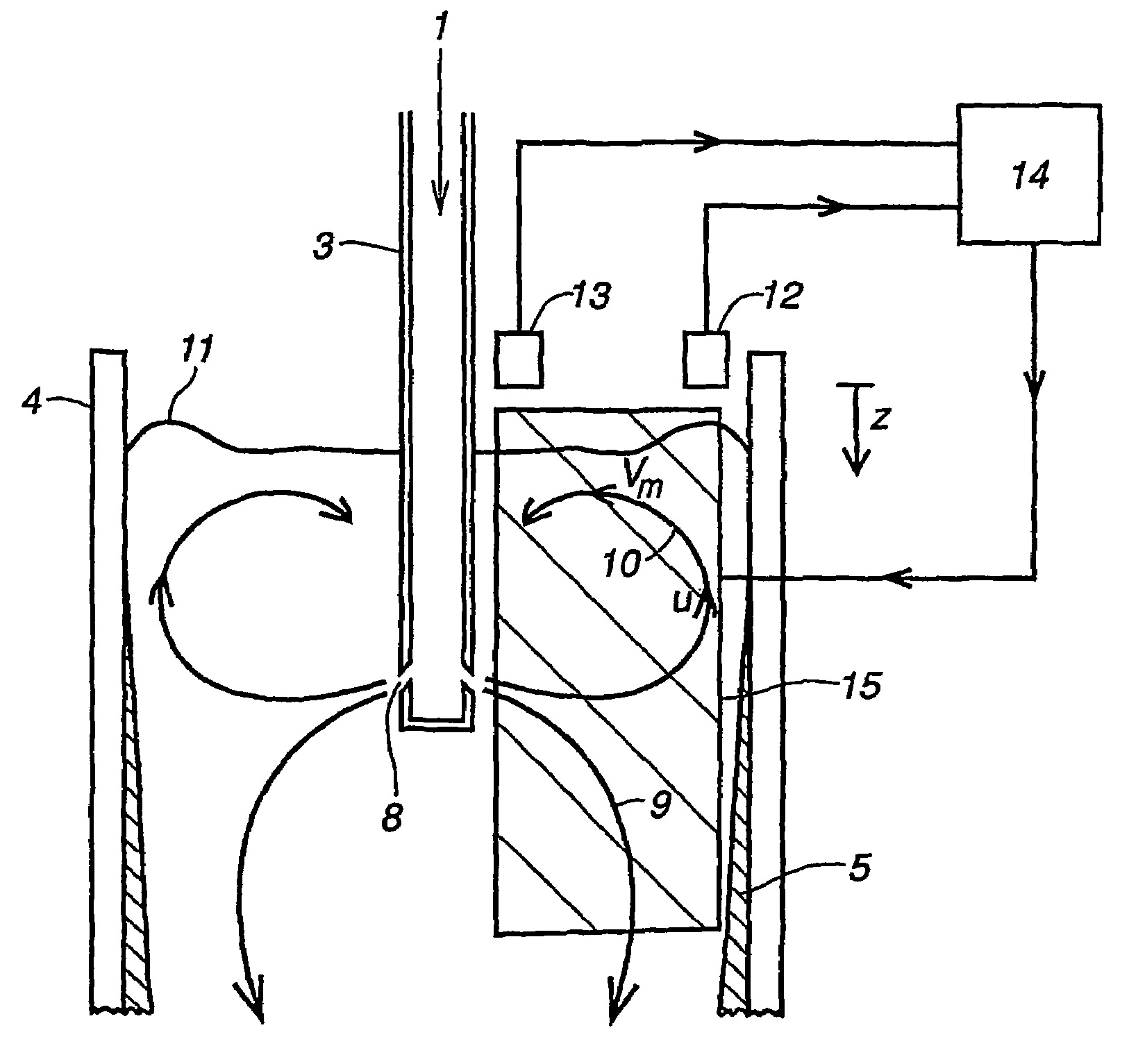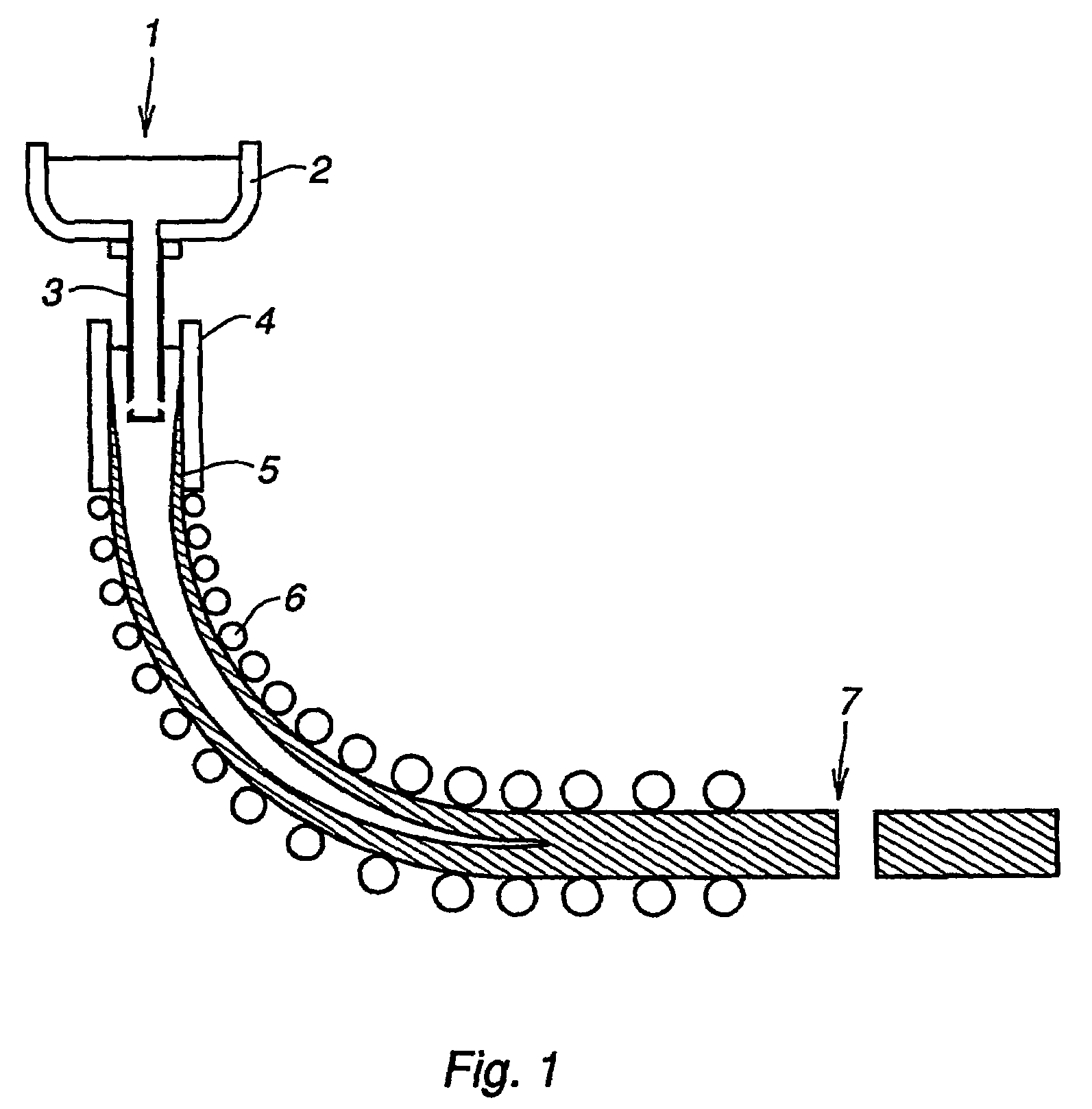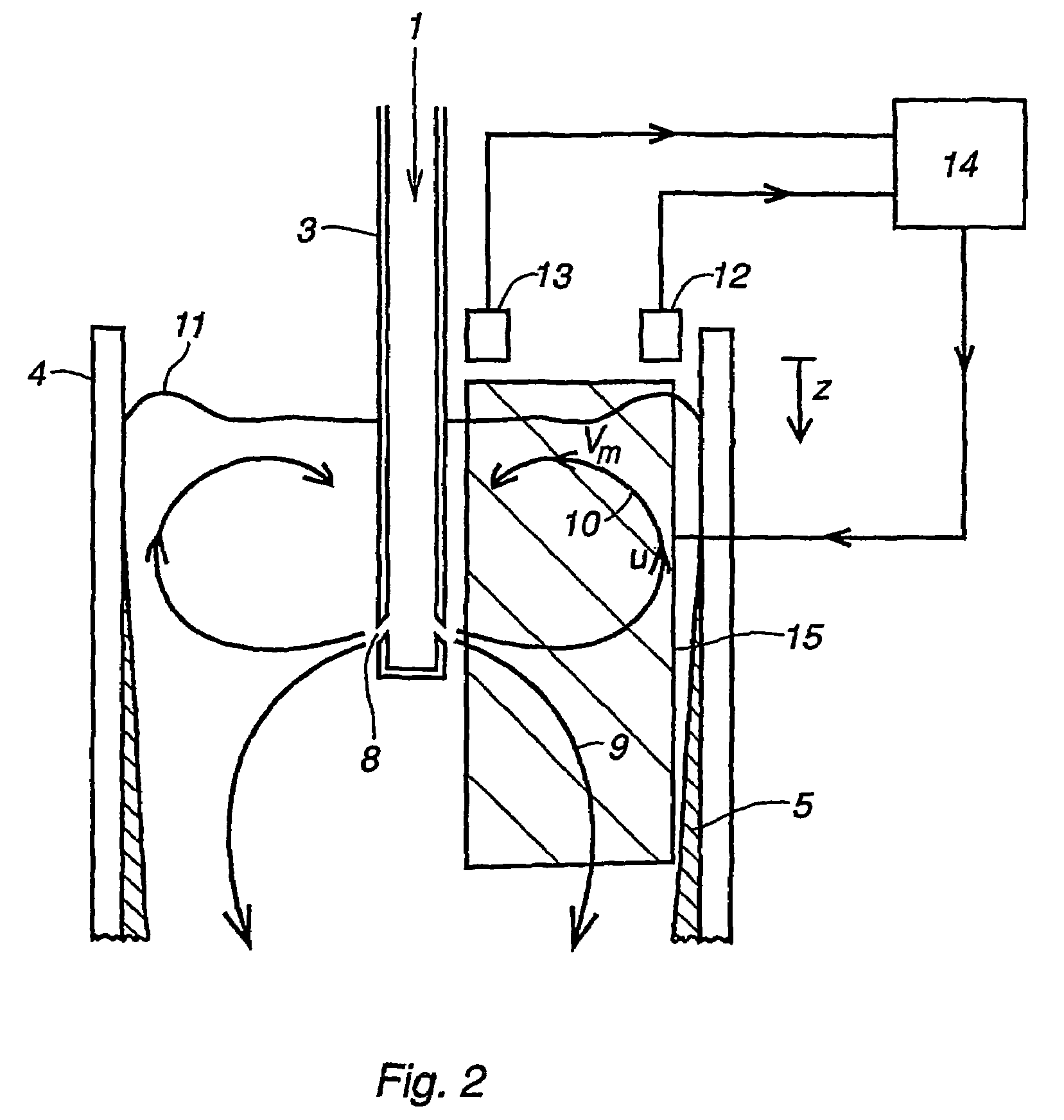Control system, computer program product, device and method
a control system and computer program technology, applied in the field of control systems, can solve problems such as reducing the effectiveness of the control system, affecting the productivity of the system, and affecting the quality of the product, so as to achieve the effect of improving the productivity
- Summary
- Abstract
- Description
- Claims
- Application Information
AI Technical Summary
Benefits of technology
Problems solved by technology
Method used
Image
Examples
Embodiment Construction
[0042]In the continuous casting device shown in FIG. 1 molten metal 1 is poured from a ladle (not shown) into a tundish 2. It then passes through a submerged entry nozzle 3 into a water-cooled mould 4 where the outer shell of the metal becomes solidified, producing a metal strand with a solid outer shell 5 and a liquid core. Once the shell has a sufficient thickness the partially solidified strand is drawn down into a series of rolls 6 where the strand becomes rolled into shape and fully solidified. Once the strand is fully solidified it is straightened and cut to the required length at the cut off point 7.
[0043]FIG. 2 shows the flow pattern of molten metal 1 entering a mould 4 via side ports 8 in a submerged entry nozzle 3. Inside the mould the flow circulates within the sides of the walls of solidifying metal 5. A primary flow 9 flows downwards in the casting direction. A secondary flow 10 flows upwards along the sides of the mould with a velocity u towards the meniscus 11. The ki...
PUM
| Property | Measurement | Unit |
|---|---|---|
| height | aaaaa | aaaaa |
| velocity | aaaaa | aaaaa |
| flow velocity | aaaaa | aaaaa |
Abstract
Description
Claims
Application Information
 Login to View More
Login to View More - R&D
- Intellectual Property
- Life Sciences
- Materials
- Tech Scout
- Unparalleled Data Quality
- Higher Quality Content
- 60% Fewer Hallucinations
Browse by: Latest US Patents, China's latest patents, Technical Efficacy Thesaurus, Application Domain, Technology Topic, Popular Technical Reports.
© 2025 PatSnap. All rights reserved.Legal|Privacy policy|Modern Slavery Act Transparency Statement|Sitemap|About US| Contact US: help@patsnap.com



